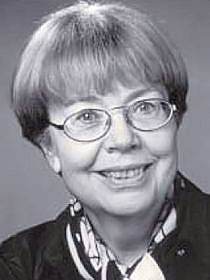Related Research Articles

Zoroastrianism, also known as Mazdayasna and Behdin, is an Iranian religion. One of the world's oldest organized faiths, it is based on the teachings of the Avesta and the Iranian prophet Zoroaster. Zoroastrians exalt an uncreated and benevolent deity of wisdom, commonly referred to as "Ahura Mazda", as the universe's supreme being; opposed to Ahura Mazda is "Angra Mainyu", who is personified as a destructive spirit and the adversary of all things good. Zoroastranism combines a dualistic cosmology of good and evil with an eschatology predicting the ultimate triumph of Ahura Mazda over evil. Opinions vary among scholars as to whether Zoroastrianism is monotheistic, polytheistic, or henotheistic. Some assert that it combines elements of all three.
In the Vedic tradition, sóma is a ritual drink of importance among the early Vedic Indo-Aryans. The Rigveda mentions it, particularly in the Soma Mandala. Gita mentions the drink in chapter 9. It is equivalent to the Iranian haoma.

Avestan is an umbrella term for two Old Iranian languages, Old Avestan and Younger Avestan. They are known only from their conjoined use as the scriptural language of Zoroastrianism; the Avesta serves as their namesake. Both are early Eastern Iranian languages within the Indo-Iranian language branch of the Indo-European language family. Its immediate ancestor was the Proto-Iranian language, a sister language to the Proto-Indo-Aryan language, with both having developed from the earlier Proto-Indo-Iranian language; as such, Old Avestan is quite close in both grammar and lexicon to Vedic Sanskrit, the oldest preserved Indo-Aryan language.

Helmut Rix was a German linguist and professor of the Sprachwissenschaftliches Seminar of Albert-Ludwigs-Universität, Freiburg, Germany.
Nora Elisabeth Mary Boyce was a British scholar of Iranian languages, and an authority on Zoroastrianism. She was Professor of Iranian Studies at the School of Oriental and African Studies (SOAS) of the University of London. The Royal Asiatic Society's annual Boyce Prize for outstanding contributions to the study of religion is named after her.

Hara Berezaiti is a mythical mountain or mountain range in Zoroastrian tradition. Over time, it has been associated with a number of real-world mountains in Iran and neighboring regions.
The Yasna Haptanghaiti, Avestan for "Worship in Seven Chapters," is a set of seven hymns within the greater Yasna collection, that is, within the primary liturgical texts of the Zoroastrian Avesta. Chapter and verse pointers are to Yasna 35–41. The name is from Yasna 42, a Younger Avestan text that follows the seven chapters.
Charles Roskelly Bawden, FBA was a professor of the Mongolian language in the School of Oriental and African Studies (SOAS) at the University of London from 1970 to 1984.

Avestan geography refers to the investigation of place names in the Avesta and the attempt to connect them to real-world geographical sites. It is therefore different from the cosmogony expressed in the Avesta, where place names refer to mythical events or a cosmological order.

Johannes Hertel was a German Indologist.
Professor John Russell Hinnells was Professor of Comparative Religion at the School of Oriental and African Studies of the University of London. At various times he held the posts of lecturer at Newcastle University, then Professor of Comparative Religion at Manchester University, and later at the University of Derby and Liverpool Hope University, and was a fellow at Robinson College, Cambridge.
Jean Kellens is a Belgian Iranologist who specialises in Avestan studies. From 1974 to 1980 he was the assistant of German Professor and Iranologist, Helmut Humbach at Johannes Gutenberg University of Mainz. He also taught at the University of Liège until 1993 and then became a member of the Science Committee at the Collège de France.

Johanna Narten, was a German Indo-Europeanist and Indo-Iranian linguist who discovered the reconstructed morphological category in Proto-Indo-European now known as the Narten present. She was Professor of Indo-European and Indo-Iranian Linguistics at Friedrich-Alexander-Universität Erlangen-Nürnberg and a member of the Bayerische Akademie der Wissenschaften.
Herman Lommel, born Hermann Lommel, was a German Indologist and Iranologist who was Chair of Indo-European Studies at the Goethe University Frankfurt from 1917 to 1950.
Philip G. Kreyenbroek is a Dutch academic specialising in Iranian studies. Throughout his career, he has published several books and articles on the Zoroastrian, Kurdish, and Yazidi traditions.
A.F. de Jong, also known as Albert de Jong and Ab de Jong, is Professor of Comparative Religion and Religions of Antiquity at Leiden University. He studied Theology and Persian in Utrecht, and Old and Middle Iranian languages at SOAS University of London. De Jong obtained his PhD in 1996 from the University of Utrecht, with his dissertation dealing with Zoroastrianism in Greek and Latin literature.
Richard John Hayward, FBA, often known as Dick Hayward, is a linguist and retired academic. He is emeritus professor of Ethiopian linguistic studies at the School of Oriental and African Studies.

The Avestan period is the period in the history of the Iranians when the Avesta was produced. It saw important contributions to both the religious sphere, as well as to Iranian mythology and its epic tradition.

Turya or Turanian is the ethnonym of a group mentioned in the Avesta, i.e., the collection of sacred texts of Zoroastrianism. In those texts, the Turyas closely interact with the Aryas, i.e. the early Iranians. Their identity is unknown but they are assumed to have been Iranic horse nomads from the Eurasian steppe.

Helmut Humbach was a German linguist and Iranist. He was a professor of Indo-European philology at University of Mainz. He is recognized particularly for his work on the Gathas of Zarathustra.
References
- 1 2 3 "Hintze, Prof. Almut", Who's Who (online edition, Oxford University Press, December 2017). Retrieved 1 July 2018.
- ↑ "Almut Hintze", SOAS University of London. Retrieved 1 July 2018.
- 1 2 "Professor Almut Hintze", British Academy. Retrieved 1 July 2018.